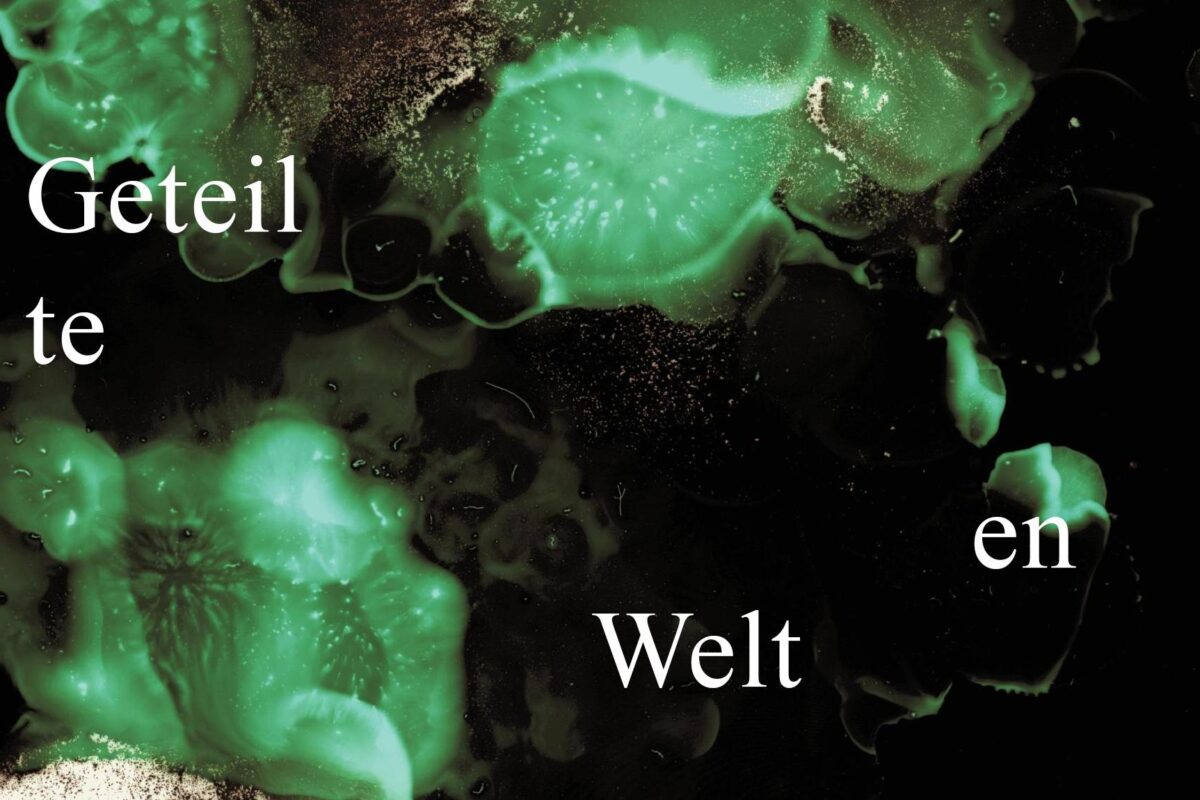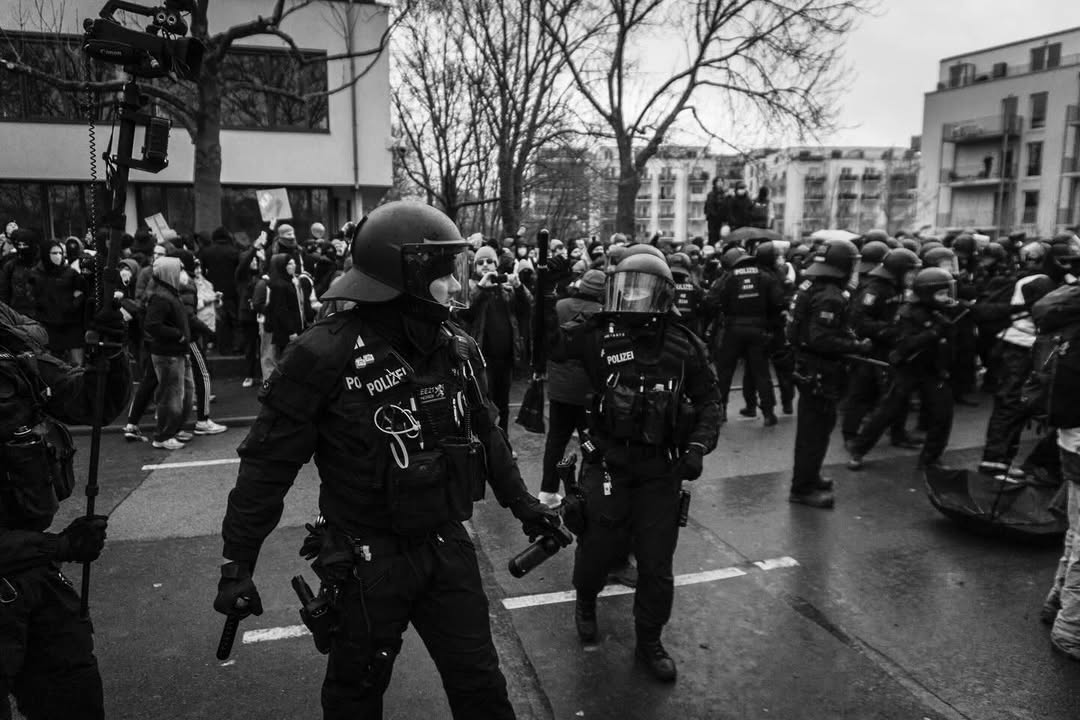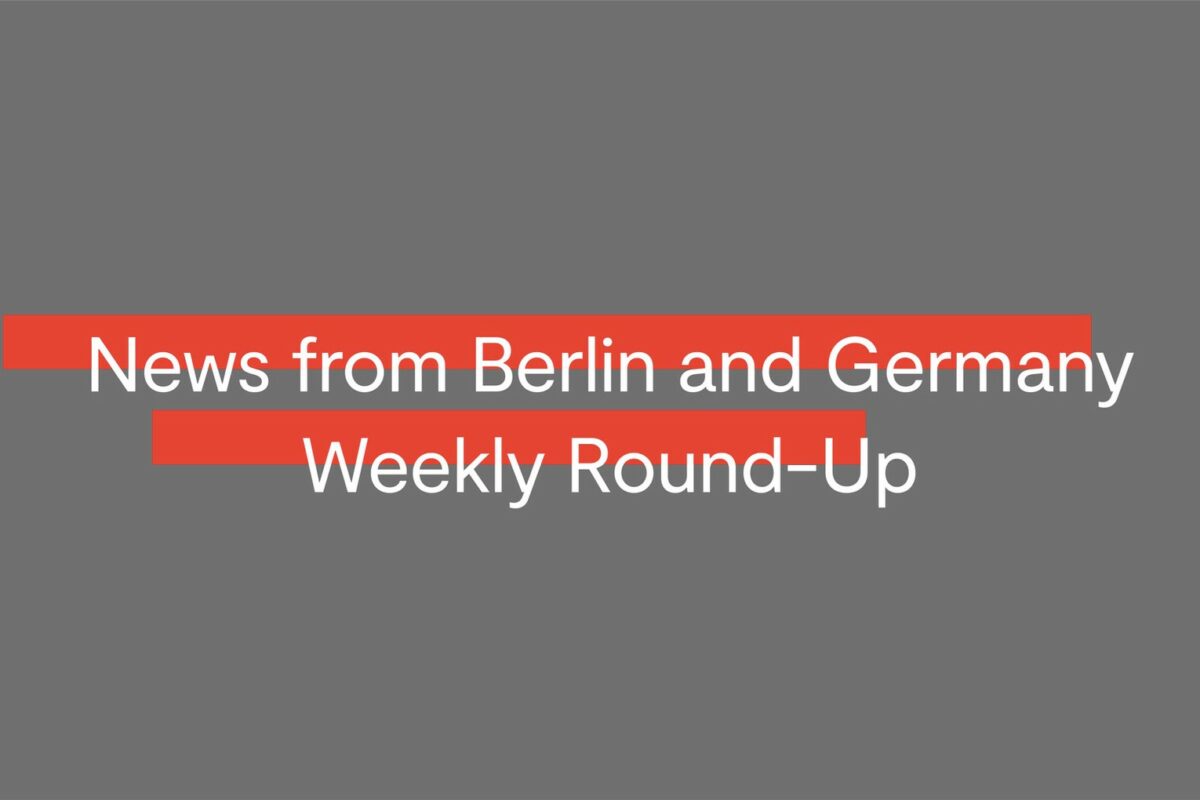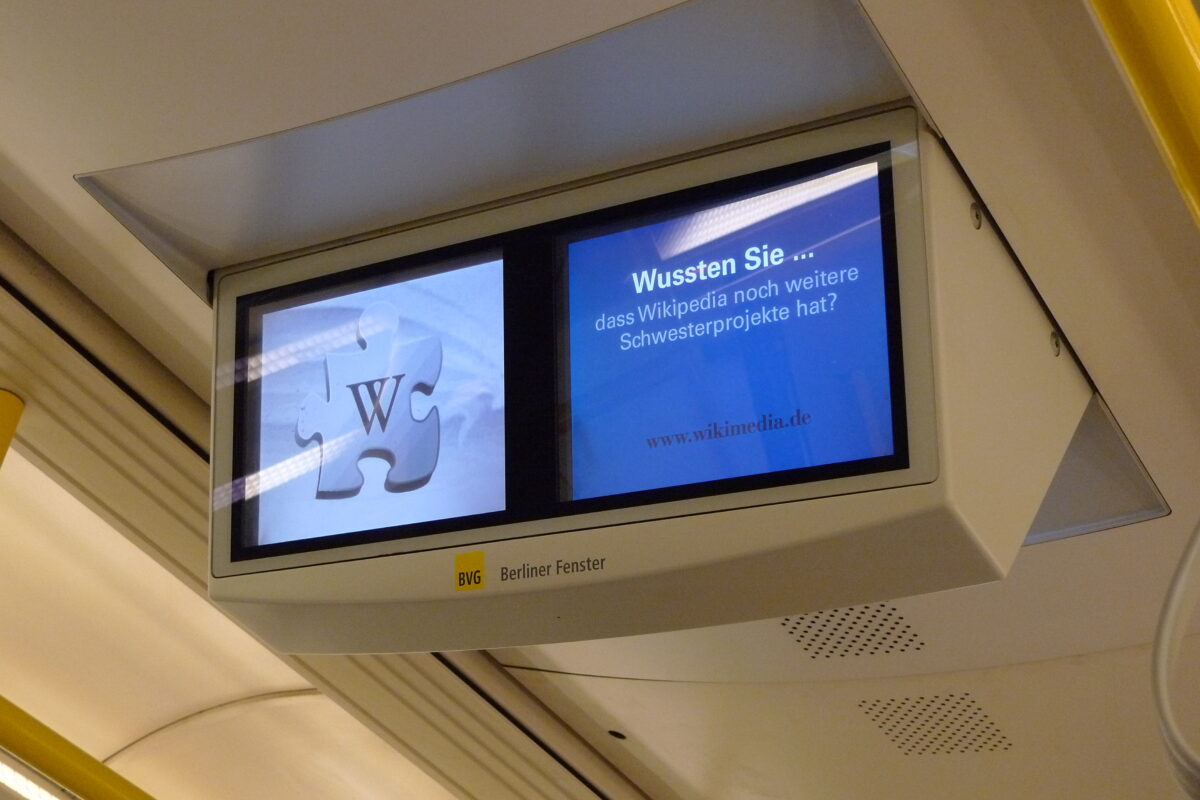In May 2024, Miriam Schickler released the audio walk “Geteilte Welten” (“Shared/Divided Worlds”) – available via online download for free or a donation. All you need is a couple free hours and a pair of headphones. There will also be a communal walk and picnic on September the 1st, starting at 15:00.
Can you introduce yourself and your new audio walk?
My name is Miriam Schickler. I work at the intersection of sound research performance and education, mainly in collaborative ways with others. Though this time I haven’t [collaborated] much because I started working on it right when the pandemic started.
I worked on the audiowalk for four years, I would call it a sonic intervention into Berlin’s memory landscapes. It guides the listener through Berlin Tiergarten where all the major Holocaust memorials are situated, but also other public sites there. It’s my critique of German memory culture as a divisive political tool. That is why it tells different histories of violence – of the Holocaust, of colonialism, of migration – through their entanglements.
It’s also, therefore a re-appropriation of history and of memory. It points out that actually all this memory was fought for by communities and their allies. And this memory was taken up by the state and turned into a national concern, which de-politicized it.
As you go through the walk, you hear not only narration but also walking on gravel, church bells, whispered voices, echoes which are integrated into the experience. What is the role of these sounds for the experience of the walk?
I really felt a need to tell these stories in a different way, not just with language. The sound is not just the content but a sensual experience. I used a lot of binaural recordings, which means that you perceive the sound in a relatively “natural” way, as in a 3D way. It’s very immersive, and lifts you to a different level of perception, without losing contact with the space that you’re actually traversing. This is why I love audio walks so much, their potential to change your perception even on something that you think you know quite well.
We’re living in a society that is dominated by, well, we call it “ocular-centrism”. Meaning, we tend to rank vision over all other senses. It’s a very Western way of perception and it’s not necessarily the only way of gaining knowledge, right? So this is what interests me with sound.
One of the things we’ve noticed in The Left Berlin is the difference in memory discourses here depending on what language something is in, whether it’s English or German. I’m wondering, since the tour has versions in both languages, whether you see these sounds as bridging this gap?
It does in a way. It was very interesting to work with the two languages, I started with English because most of my education took place in English. I read mainly in English, but it was super-important for me that all of it would be articulated in German. I worked on it in German then changed the English again, with a more precise understanding of it.
And another thing I noticed during the tour is the amount of care that you stress for the participant, urging them to take breaks, watch out for traffic, etc. What is the role of this?
While I was writing and composing it, I always had the question of who am I doing this for? Who am I addressing? And I tried to be as open as possible to different positionalities. But I was mainly concerned with people who have experienced the type of violence discussed in the walk, whether directly or in their families. I wanted to make sure that they don’t feel alone. Because for me, often being the only Jew in different spaces while growing up in Germany, when people talked about history it was often a very lonely experience.
One of your past projects, “Echoing Yafa”, also engaged in memory politics by recreating a history that had been actively erased, that of a destroyed Palestinian neighbourhood. What is it about audio walks or work that makes it such a powerful tool for engaging both erasures and constructions of memory?
“Echoing Yafa” tells the story of Manshiyyah, a Palestinian neighbourhood that now literally lies underneath Tel Aviv. I started working on it, because it was difficult for visitors to the city to get access to that kind of information about the Nakba. Audio walks are a very accessible medium, you don’t need a guide or appointment, you can just download or stream it for free and do it whenever you want. Along with the multi-sensorial part I mentioned before, you’re being asked to engage with the surrounding in different ways and walk different routes, look at things that you hadn’t paid attention to before.
I’m wondering if your approach between the two walks has changed because of the time between them or the difference between an Israeli memory politics or a German one?
I mean, I’m sitting between these two nationalities, my father is a Jewish Israeli citizen, my mother is a non-Jewish German. The big difference, I think, is that for “Echoing Yafa” I worked very closely with a lot of Palestinian collaborators and was not telling my own story. I wouldn’t do it that way today. At the same time I’m implicated in both stories. In “Echoing Yafa” because I’m the daughter of a Holocaust survivor coming to Palestine as a child in 1944 or 1945. But there’s definitely a connection that goes beyond who I am. I see them historically as a sequence, as if “Geteilte Welten” is the prequel to “Echoing Yafa”.
What made you want to do this audio walk about Berlin?
The easiest answer is because I live here, and I work where I live. I actually never wanted to deal with those topics, I grew up during this memory culture boom when they started erecting all those monuments, and also because of the proximity of it all in my family.
When I came back to Germany to live, these topics became bigger and bigger. The instrumentalisation of memory, the weaponisation of antisemitism – I felt the urgency to deal with it. And the memorials are central sites. Think of the memorial to the murdered Jews of Europe. It’s as if these blocks of cement came to signify German memory culture.
And now that your audio walk has been released, how do you expect it to live in what is a changing city, and impact people’s experiences of the city?
I just hope people will find out about it and experience it. It’s not gonna change things directly, but it has the potential to open a lot of discussions, specifically between communities. Something that I didn’t realise until after I had finished, was how much it’s actually about having space for grief and mourning. So much is being taken away, or repressed by the city of Berlin. So I hope it will open up possibilities to think, feel and mourn together, and turn this into political energy to work against all this continued violence and repression.
Talking about the importance of spaces to grieve, you discuss in the tour how the Memorial to Europe’s Sinti and Roma Murdered Under Nazism is now set to be altered and damaged in order to create an S-bahn line.
Yeah, I mean the plans are not clear yet. To me it’s scandalous that this is possible. I find this memorial different from the one to the murdered Jews of Europe. Because the latter wasn’t a Jewish initiative and I don’t know anyone Jewish who identifies with it. Whereas the one for Rom*nja and Sinti*zze is a really important space for political activism, but also as a site to mourn and grieve.
It would be terrible if this were destroyed or altered. And thinking that an S-bahn would go underneath it… I mean, imagine how that would feel, with the history of the Deutsche Bahn and the Reichs Bahn that carried millions of people to their deaths. It’s absurd. I don’t think it would be possible to come up with the same plans for the Jewish memorial, and that shows again how selective this is and how opportunistic.
Throughout the walk, you repeatedly engage in the overlaps in the histories of the Holocaust and colonialism. But you also refuse to engage in simplistic identity politics, rather, you prefer to leave things messy. What is the idea behind how you engage in these entangled histories?
It comes from how memory has come to be abused, as if history and identity can give us a clear path to the present or future. I think both non-Jewish German and Jewish identity have been instrumentalised by Israel or Germany into some sort of entitlement. As if because we did “A”, we have to do “B”; or because we went through “A”, we are entitled to “B”. That’s something I refuse.
There’s a legitimacy to identity politics, but there’s also a danger of reproducing really simplistic binary oppositions – where does that leave us with the politics? In a way, this audio walk is feeding from my own biography and family, but what motivates me to do it is not my German-Jewish identity, but my deep commitment to justice. It’s a political thing. I have a relevant perspective to speak on these things, but I’m not entitled to it. And I want to show how messy and contradictory history is, and how we’re all implicated.
It also stood out to me how you engaged historical content in its messiness, such as the question of Queer people during the Holocaust. You challenge the monument’s narrative that only gay men deserve memorialisation. So you give space to the targeting of Queer people more broadly, while also stressing how important it is to recognize that many people who hid their queerness were among the perpetrators during the Holocaust. I’m curious how you think these historical complexities are useful for us today?
First of all, to de-center the narrative of the perpetrators, in order to not repeat the violence through their language and how they categorised people. But it is also a way to question and destabilize our understanding of the categories of innocent victims and evil perpetrators. Men who engaged in homosexuality were persecuted by the Nazis and women weren’t, at least in Germany. In Austria they were, interestingly. What does that actually mean? Did that apply to everyone the same way? What about a person that was racialised and homosexual, or disabled and homosexual?
And what does it mean today? We have a lesbian leading an extreme right wing party [Ed: Alice Weidel, co-lead candidate for the federal AfD], we have this memorial and laws against discrimination. But that doesn’t mean that Queer people are all safe. It also depends on where they are, and what else is in their identity. I think you always have to look a little bit closer in order to understand, to not fall into traps, and to be in solidarity.
On that note of solidarity, how has it taken putting out this walk in the present political moment?
It was meant to be released in November 2023. It was really difficult to finish the project while things have been escalating so quickly. The history of the Holocaust has been instrumentalised to such an unprecedented level. So much of what’s happening now in Gaza and elsewhere is implicated in these histories. It was impossible to include all of it, but I really hope it speaks to the situation we face now.
There’s a lot of overlapping of time periods during the walk, or things that don’t fit into a linear time frame. What were you trying to achieve while engaging this splicing of chronology within a given monument?
In the hegemonic narrative the Holocaust transcends history. It’s the Zivilisationsbruch, the rupture of civilization, there’s no before or after. I think this is really detrimental to our understanding of it and it enables its instrumentalisation. In order to deepen our understanding of how violence and oppression are being produced and reproduced, we really need to move away from this.
At the same time it is really important to be precise and intentional when we engage with these entanglements and comparisons to sharpen our understanding. The danger of equating everything with everything and relativising historical injustice is real. It doesn’t just concern the Holocaust. I didn’t have to construct these historical connections artificially, they exist. They are mind boggling, like the example of the German engagements in Venezuela that’s hardly talked about.
Can you tell us more about that?
It was the first attempt to establish a German colony. The Welser merchant family from Augsburg co-financed the Spanish conquest of America. In return they got Venezuela and called it little Venice. It didn’t go well for the Germans as a colony, but people kept migrating and profiting from it, including during the Third Reich. The most recent example is a very important site of the walk, the Global Stone Project in Tierpark. Here a German artist took a rock which is important to the Pemón indigenous community in Venezuela, and dumped it in the Tiergarten to become part of his so-called “peace project”. So one of the stories is how this indigenous community fought for 20 years to get it back.
These overlapping histories are really hard to lay out as a written interview, but that speaks to the power of the audio walk where you deftly tie these together, in a way that an interview can’t.
All these are examples of connections, so I’m convinced that these worlds are shared. And I think that’s very important for the left, where we often end up fighting because we lose sight of the connections of our struggles.
Thank you for your time, Miriam.




